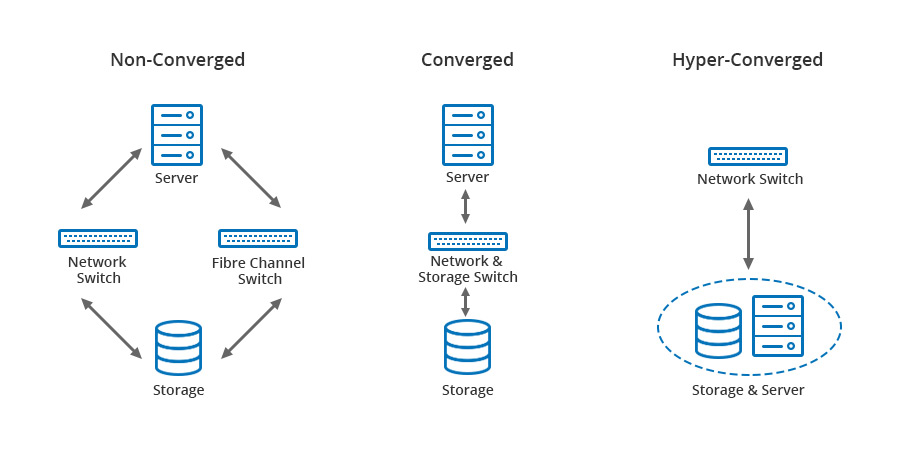Ways to improve your data center

In terms of what is hyper-converged infrastructure, it is a mega trend, a transition that's happened over the past couple of decades from the kind of DIY (Do-it-Yourself) approach where you would take the three layers of infrastructure - your computer, your storage and your network - and actually buy them from three different vendors and integrate those together in your Data Center. The problem with that is when things go wrong, and there's a lot of things can obviously go wrong; in terms of actually building that infrastructure, the integrations of it... There was a lot of risk putting that together. About nine years ago the idea of a converged infrastructure came about with VCE, which was a combination of VMware + Cisco + EMC, they took those same three layers of infrastructure and packaged them and delivered them as a single solution so what you are actually getting was kind of a pre integrated system; same three components, same three layers of infrastructure but prepackaged and delivered single system. That takes risk out, it takes complexity out, it increases the time to value, but if you look at the underlying infrastructure nothing's actually changed. It took the risk in the complexity out but there's still the same three layers, the same cost associated to it and so on. What hyper-converged does is take the same concept of packaging and simplifying and reducing risk and complexity, but takes it a step further by actually collapsing the infrastructure and reducing the cost and the complexity of that. The value proposition of hyper-converged is to simplify the data center. This kind of single tier of compute sand and storage that is very scalable and scales out kind of a modular approach. It reduces the time to value in terms of standing up that infrastructure, it reduces the costs by actually eliminating layers of infrastructure and it reduces the complexity because those layers are not there anymore.

This is a software-defined storage that use inexpensive local discs within the individual servers and create a common pool over the network. This disk is usually a combination of high speed solid-state (use for disk pulling caching) and then a much larger set of disks that are rotational. Multiple copies of all data is made across the nodes, but technologies such as compression and deduplication help mitigate the space taken up by these extra copies. The pros for hyper-convergence environment are that it's centrally managed, it's highly scalable, it's high-performing and can save on overall costs.